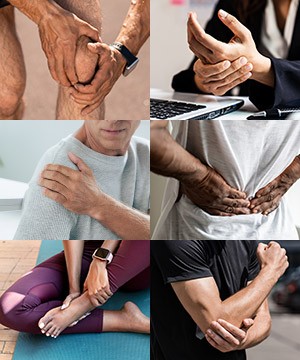The Connection Between Joint Pain and Inflammation

Understanding Joint Pain and Inflammation: Finding Hope and Relief
Joint pain is more than just a physical discomfort—it’s a challenge that can deeply affect your daily life, making even simple tasks feel overwhelming. For millions of people around the world, joint pain ranges from a dull ache to debilitating discomfort, and it’s often caused by underlying issues like injury, overuse, or chronic conditions. One of the most common culprits? Inflammation.
Let’s take a compassionate look at how inflammation impacts joint health and explore ways to manage it, so you can move through life with greater ease.
What Is Inflammation?
Inflammation is your body’s way of protecting itself, a natural process designed to heal damage and fend off harm. When tissues are injured or irritated, the body sends white blood cells to the affected area. These immune cells work tirelessly to fight off invaders, like bacteria or viruses, and begin the healing process.
You might notice redness, swelling, or warmth around the area—these are signs that your body is working to repair itself. This response is essential for recovery. But when inflammation becomes chronic, it can turn into a long-term problem, leading to persistent pain and damage, especially in the joints.
How Inflammation Affects Your Joints
When inflammation becomes a constant presence, it can wear down the cartilage—the soft, cushiony tissue that protects your joints. Without enough cartilage, your bones can rub together, causing pain, stiffness, and swelling.
Chronic inflammation can also release harmful enzymes that damage not just cartilage, but the bones, ligaments, and tendons that support your joints. This can result in painful conditions like rheumatoid arthritis, osteoarthritis, and gout, where everyday activities like walking or gripping objects feel increasingly difficult.
Finding Relief: Managing Joint Pain and Inflammation
If you’re struggling with joint pain, know that there’s hope. Addressing inflammation is often the key to regaining comfort and mobility. While the journey to relief can feel daunting, small, consistent changes can make a big difference.
1. Nourish Your Body
The food you eat has a profound impact on inflammation. A diet rich in anti-inflammatory foods—like fatty fish, leafy greens, nuts, and berries—can help your body fight inflammation naturally. Try to avoid processed foods, refined sugars, and trans fats, which can trigger or worsen inflammation.
2. Keep Moving Gently
Even when it hurts, gentle movement can help improve flexibility, reduce stiffness, and strengthen the muscles that support your joints. Activities like yoga, swimming, or walking are wonderful for promoting circulation and easing tension without putting too much strain on your body.
3. Explore Supplements and Natural Remedies
Nature offers powerful tools to combat inflammation. Supplements like turmeric, ginger, and omega-3 fatty acids have been shown to have anti-inflammatory effects. Combined with a balanced diet, they may help soothe joint pain over time. CLICK HERE FOR SUPPLEMENT INFORMATION.
4. Consider Medications When Needed
For more severe pain, over-the-counter or prescription medications, like non-steroidal anti-inflammatory drugs (NSAIDs) or corticosteroids, can provide relief. Always consult your doctor to find the right treatment plan for your unique needs.
A Compassionate Path Forward
Living with joint pain can feel isolating, but you’re not alone. By addressing inflammation and adopting a joint-friendly lifestyle, you can reclaim your comfort and mobility. Start with small, manageable steps, like improving your diet or taking up a gentle exercise, and gradually build from there.
Above all, remember to listen to your body and treat it with the care it deserves. If you’re unsure where to begin, consult your doctor or a specialist who can guide you toward a personalized plan. Relief may take time, but it’s within reach—and you deserve it.
You don’t have to live with constant discomfort. With a thoughtful approach to managing inflammation, you can move toward a brighter, more pain-free future.
